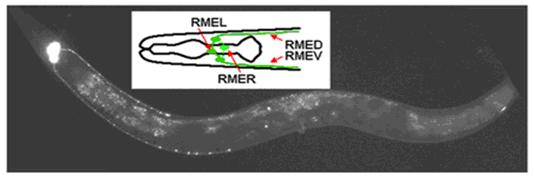How do individual nerve fibers find their way along specific paths in a complex environment such as the developing central nervous system? A principal mechanism in axon guidance is binding of a receptor protein on the axon surface to a guidance molecule. However, it remains a mystery exactly how a limited number of guidance molecules can pilot the growth of billions of neurons. In this study, we used the nematode worm Caenorhabditis elegans to establish a system to follow the outgrowth of a single neurite. We then searched for genes affecting neurite development, and uncovered a guidance molecule, CWN-2 (a member of the well-known Wnt family of signaling proteins), which attracts neurite growth. We also identified two Wnt receptors (CFZ-2 and MIG-1, from the Frizzled family), a co-receptor (CAM-1, from the Ror family), and an effector (DSH-1, from the Dsh family). Together these proteins convey the Wnt guidance signal into the neurite and influence its growth. In addition, our study reveals that the restricted spatial localization of the Wnt signal, together with the specific combination of Wnt receptors and effectors expressed in the neurite, are important for the complex function of guidance molecules.

Fig. The RME motor neurons. In this study, we studied the anterior-posterior neurite outgrowth of RMED and RMEV neurons.



